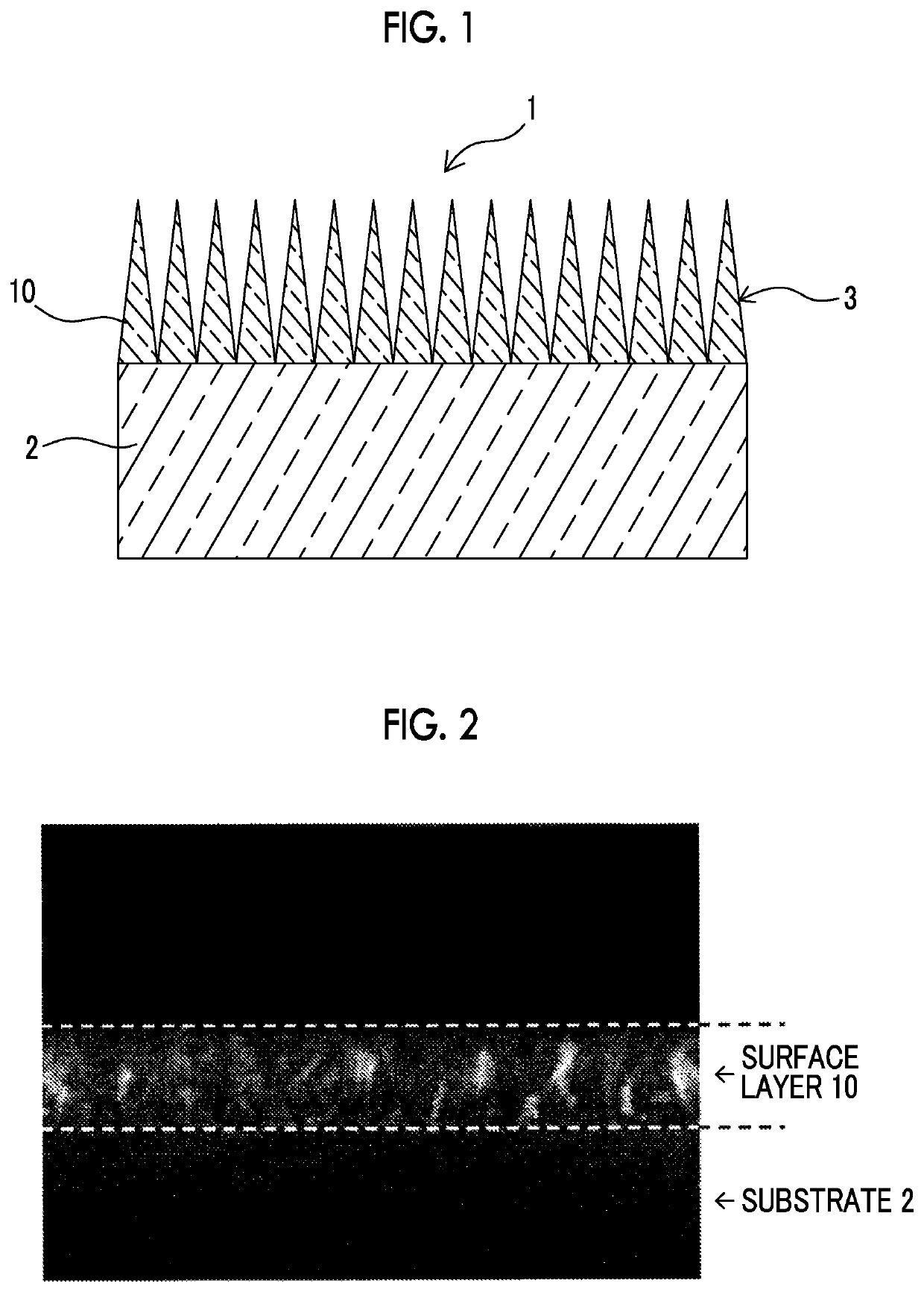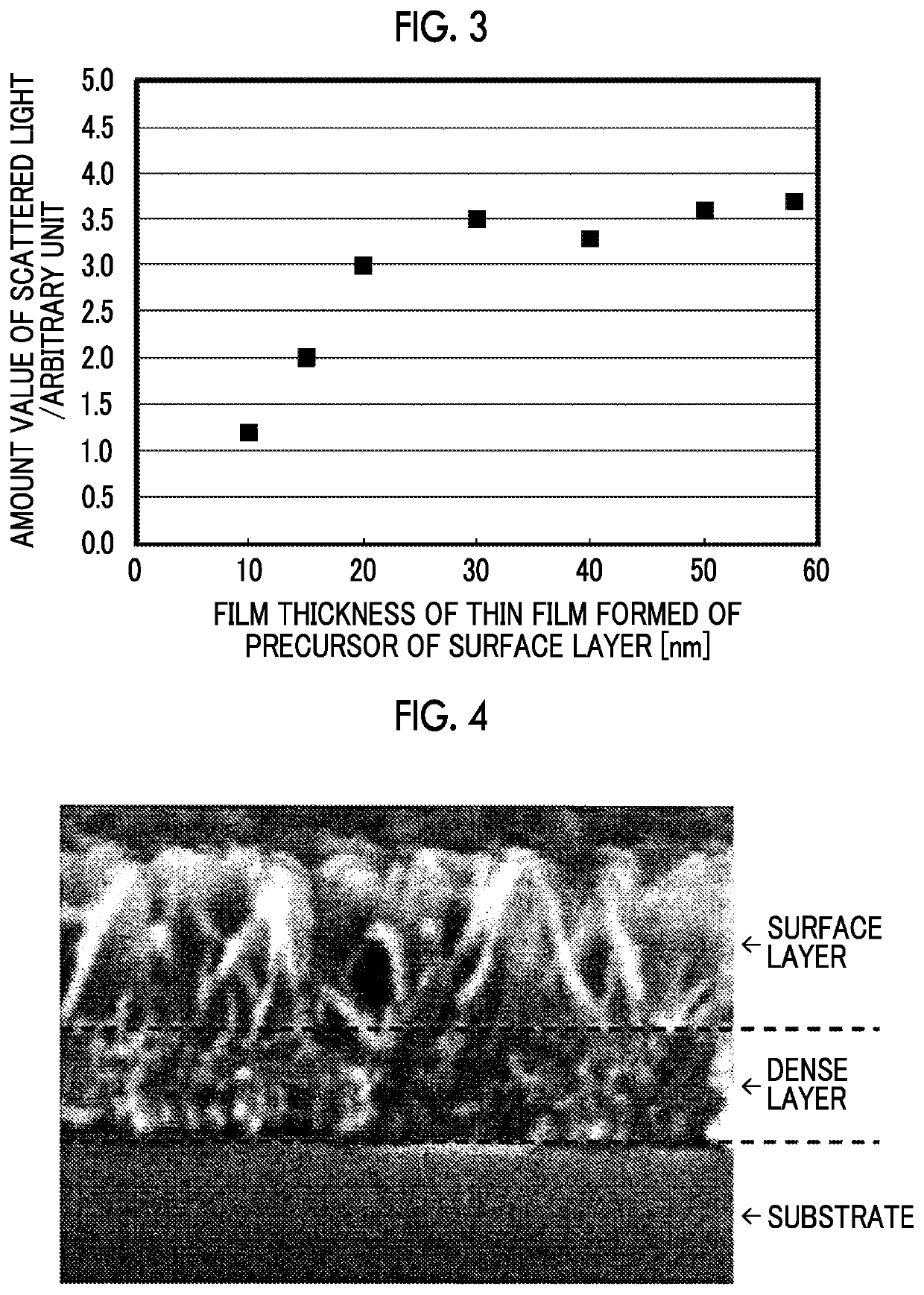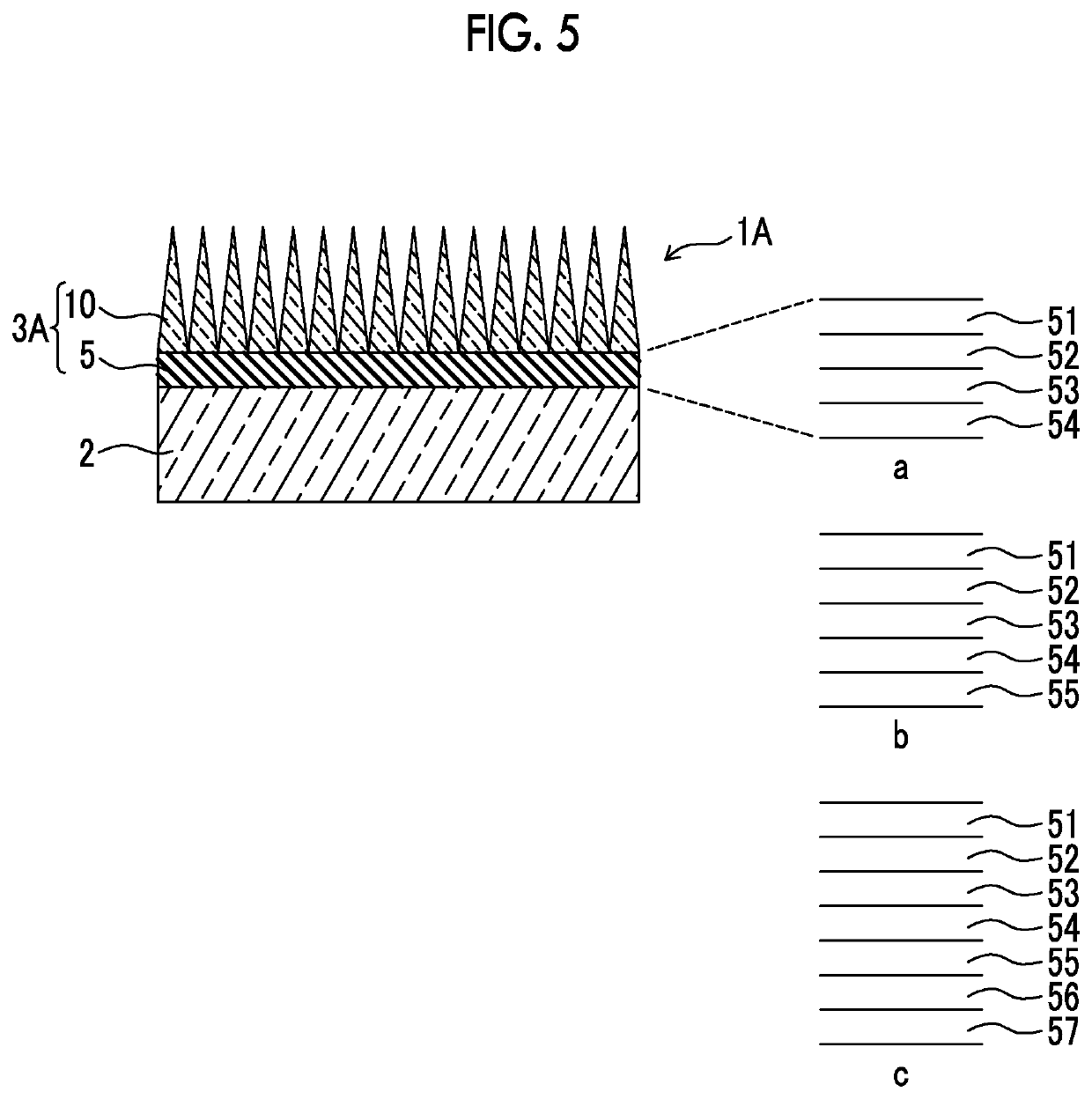Antireflection film and method of producing the same
a technology of anti-reflection film and anti-reflection film, which is applied in the field of anti-reflection film, can solve the problems that the quality of optical elements is significantly affected by light in some cases, and achieve the effect of suppressing scattered ligh
- Summary
- Abstract
- Description
- Claims
- Application Information
AI Technical Summary
Benefits of technology
Problems solved by technology
Method used
Image
Examples
first embodiment
[0028]FIG. 1 is a schematic cross-sectional view showing a schematic constitution of an optical member provided with an antireflection film according to a first embodiment of the present invention. In addition, FIG. 2 is an electron microscope image obtained by imaging a cross section of the optical member provided with the antireflection film according to the first embodiment of the present invention in an enlarged manner.
[0029]As shown in FIGS. 1 and 2, an optical member 1 of the first embodiment includes a transparent substrate 2, and an antireflection film 3 that is formed on a surface of the substrate 2. The antireflection film 3 includes a transparent surface layer 10 having an alumina hydrate as a main component, and the surface layer 10 has an uneven structure in which a volume proportion of the alumina hydrate per unit volume decreases in a direction from the substrate 2 side to the surface side. In the surface layer 10, a period of apexes distributed on the surface side is...
second embodiment
[0038]In the antireflection film 3 of the first embodiment, scattered light is suppressed because a dense layer is not formed. However, in the case in which a reliability test such as a temperature cycle test is performed, peeling-off occurs at the interface between the surface layer 10 and the substrate due to a difference in thermal expansion coefficient between the surface layer 10 and the substrate 2 and changes in temperature during the test, and a layer of air is formed in the peeled-off portion. Thus, it has been newly found that the reflective properties of the antireflection film 3 deteriorate in some cases.
[0039]FIG. 5 is a schematic cross-sectional view showing a schematic constitution of an optical member provided with an antireflection film according to the second embodiment of the present invention. In addition, FIG. 6 is an electron microscope image obtained by imaging a cross section of the optical member provided with the antireflection film according to the second ...
example 1
[0056]A multilayer film in which layers of tantalum pentoxide (refractive index: 2.13755) as a high refractive index layer, and magnesium fluoride (refractive index: 1.38441) as a low refractive index layer were alternately laminated on a concave lens (curvature radius: 17 mm) made of FDS90 (manufactured by HOYA Corporation, refractive index: 1.8541) as a substrate included first to fourth layers. The thermal expansion coefficient value of the first layer formed of tantalum pentoxide as an adhesion layer is 9×10−6 / K at a reference temperature of 25° C. In the surface layer portion of the first layer, a thin aluminum film having a film thickness of 20 nm was formed as a precursor of the surface layer having an uneven structure. The refractive index of the surface layer having the uneven structure is changed from 1 to 1.27 from the air side to the substrate side. The layer constitution from the substrate to the thin aluminum film is as shown in Table 1 below.
[0057]In Table 1, the refr...
PUM
| Property | Measurement | Unit |
|---|---|---|
| refractive index | aaaaa | aaaaa |
| thickness | aaaaa | aaaaa |
| temperature | aaaaa | aaaaa |
Abstract
Description
Claims
Application Information
 Login to View More
Login to View More - R&D
- Intellectual Property
- Life Sciences
- Materials
- Tech Scout
- Unparalleled Data Quality
- Higher Quality Content
- 60% Fewer Hallucinations
Browse by: Latest US Patents, China's latest patents, Technical Efficacy Thesaurus, Application Domain, Technology Topic, Popular Technical Reports.
© 2025 PatSnap. All rights reserved.Legal|Privacy policy|Modern Slavery Act Transparency Statement|Sitemap|About US| Contact US: help@patsnap.com



